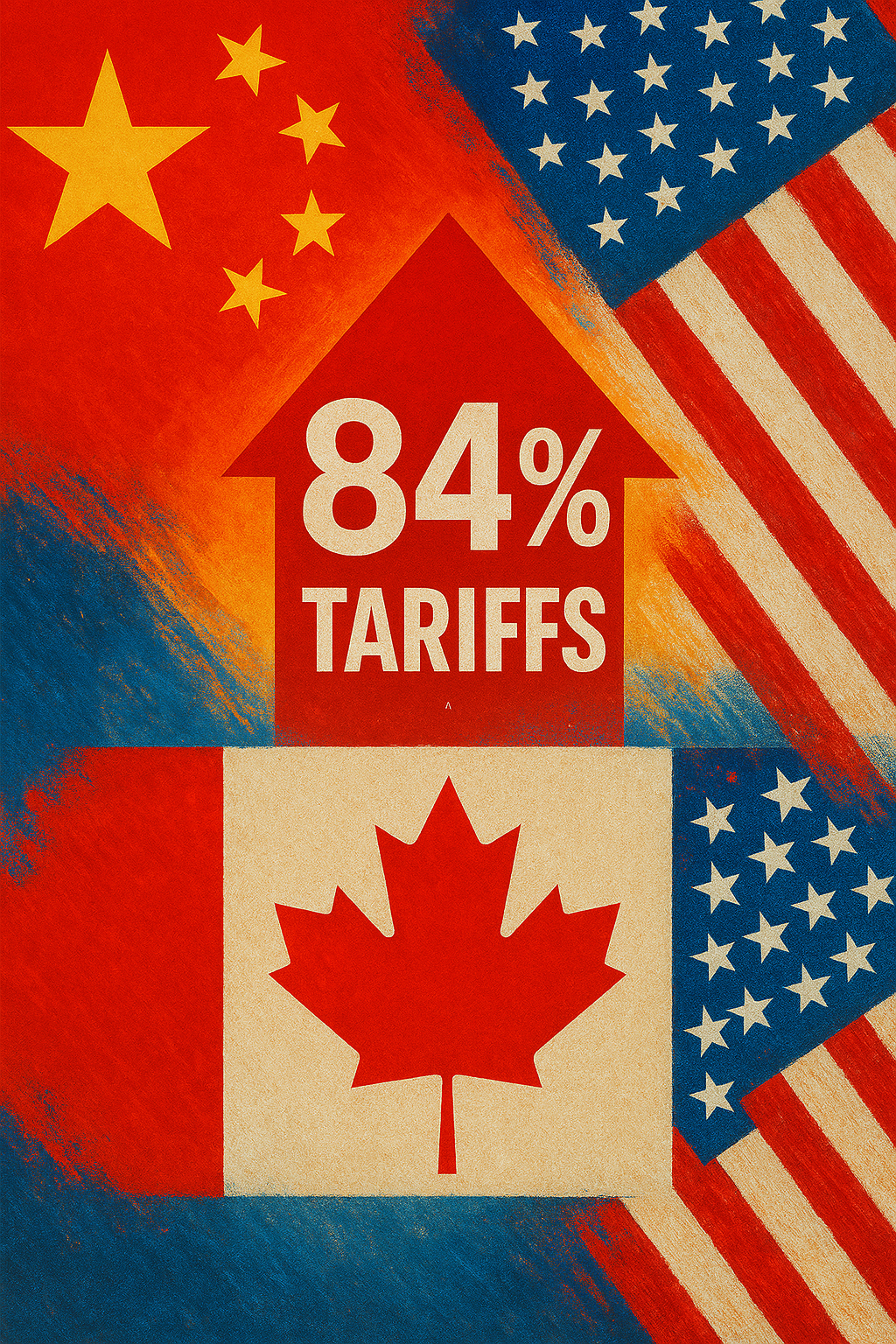
Vancouver, BC - April 9, 2025 - On Wednesday, April 9, 2025, China intensified its trade dispute with the United States by announcing an 84% tariff on all U.S. goods, effective April 10, in response to President Donald Trump’s imposition of a 104% tariff on Chinese imports. This latest salvo, driven by escalating tensions over trade imbalances and economic policies, unfolded across the Pacific, with Canada observing from its northern perch. While not directly hit by China’s reprisal, Canada faces indirect consequences as a key U.S. trading partner and a participant in interconnected North American markets.
China’s Bold Retaliation
China’s Ministry of Commerce framed the 84% tariffs as a necessary defense against what it calls U.S. “unilateral bullying.” The measure builds on earlier tariffs of 10-15% on U.S. agricultural goods like pork and soybeans, but this sweeping increase targets all American exports, aiming to squeeze industries dependent on Chinese demand. Beijing also tightened export controls on rare earth minerals critical to U.S. manufacturing, signaling a broader strategy to counter Trump’s policies. The U.S., unwavering in its stance, maintains the tariffs address unfair trade practices, setting the stage for a prolonged standoff.
Canada’s Economic Ripples
Canada watches closely as the U.S.-China clash disrupts global trade flows. The U.S. tariffs inflate costs for Canadian firms relying on American components, while China’s reprisal could redirect demand toward Canadian exports like canola or lumber if U.S. goods falter. Yet, the uncertainty rattles markets, with potential price hikes looming for Canadian consumers and businesses.
Navigating the Fallout
As China unleashes its 84% tariffs and the U.S. digs in, Canada finds itself adapting to a volatile trade environment. Opportunities may emerge for Canadian exporters, but the risks of economic turbulence loom large, forcing industries to recalibrate in a world reshaped by this trans-Pacific feud.
And the worst part? Everything could shift again in mere hours, days, or weeks. The pace of change is so rapid that even seasoned analysts and the media struggle to keep up. As the global economic chessboard continues to shift, one thing is clear—Canada, like the rest of the world, must stay alert, agile, and ready to adapt.
#Trade War 2025 #China US Tariffs #Global Economy #Canada Perspective #US China Tensions #Tariff Impact #International Trade #Canadian Exports #WBN News Global #Elke Porter
Connect with Elke at Westcoast German Media or on LinkedIn: Elke Porter or contact her on WhatsApp: +1 604 828 8788

